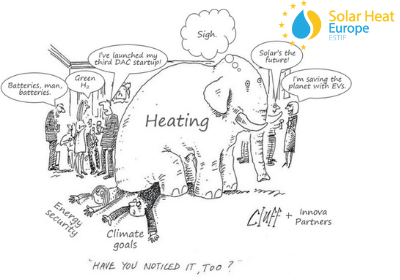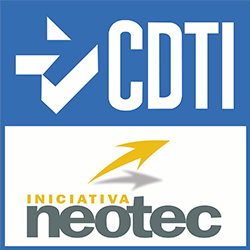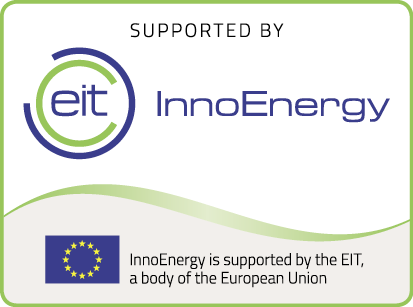Discover the future of solar energy
At its annual forum, World Economic announced that “by 2030, solar may well have become the most important source of energy for electricity and heat production in much of the world”. So although solar energy is still marginal in the global energy mix, we are forced to note that it is growing exponentially and all over the world. Indeed, solar energy appears to be the major energy of the future because of its many advantages: renewable, inexhaustible, universal and accessible to all.
Solar energy, the energy of the future
Solar energy has a remarkable and undeniable characteristic: it is inexhaustible, universal and accessible to all. This diffuse and universal character ensures that it has a very special place in the new energy uses of tomorrow.
The growth of solar energy in the world is driven not only by the industrial sector, which has a large demand for electricity and hot water, but also by individual or community use. In emerging countries, where there is a lack of energy infrastructure, it offers simple and autonomous solutions to the most isolated inhabitants. In industrialised countries, it appears to individuals as a complementary source of energy, a source of savings and even a source of income when it is transmitted to the electricity networks.
If we look at the use made of the different solar technologies: photovoltaic, thermal and hybrid. We can see that solar energy offers a very complete solution to the majority of people. However, we must be careful to avoid generalizations. First of all, let us look at thermal solar panels. The capture of the sun’s rays by the panel’s thermal sensors is the most immediate use of solar energy. By converting solar radiation into heat, thermal collectors can supply domestic hot water and heating to individual and collective buildings. The reduction in the cost of photovoltaic panels has led to an increasing number of individual and collective uses. Capturing sunlight and transforming it into electricity, photovoltaic panels are integrated or installed on the roofs of houses, collective buildings and agricultural installations. The energy produced is used for self-sufficiency or fed back into the electrical red. Hybrid solar panels will meet both electrical and thermal demands.
If we look back at the energy market twenty years ago, we see that the global solar market was extremely limited and depended primarily on subsidies and few policies at the time. Today, solar energy is growing considerably and the interest of the global market is increasing. According to the International Energy Agency (IEA), more than 130 gigawatts (GW) of new solar capacity will be installed worldwide by 2021: data that confirms its exponential growth. For the World Economic Forum, this rapid growth in solar can only accelerate as costs continue to fall and technological advances are made in panel efficiency and even in the storage of the electricity produced, and it is betting that by 2030 solar will become the most important source of energy for both homes and industry.
Over the past decade, the price of solar energy has fallen dramatically, by more than 85% since 2010 according to the International Energy Agency. And new technologies still promise to increase the efficiency of solar panels and reduce their costs, such as the aHTech® hybrid solar technology, which offers a higher efficiency (89%) while combining it with the best profitability on the market. According to the World Economic Forum, the price of solar panels could fall by 40-50% in ten years, with a much higher return on investment than for other renewable energies. Indeed, improvements and innovations in solar technology are essential to the growing political interest in the solar sector. Abora Solar is aware of this, and for this reason, the company is doing its utmost to offer the most efficient and cost-effective energy solution for all, which will enable it to meet the 2030 objectives set by the European Union: this is the answer provided by its hybrid solar panel with aHTech® technology.
A response to the challenge of decarbonisation and the climate issue
At present, the share of solar energy or even, more generally, the share of renewable energies in the energy mix remains low compared to fossil fuels. However, the growing share of renewable energies is undeniable and is explained in particular by the collective awareness of a common action to fight the climate challenge, but also by political positions such as the implementation of the 2030 Agenda by the European Union in favour of the use of renewable energies. Among renewable energies, solar energy is very promising because of its many advantages and the response it offers to the climate challenge.
“Year after year, we are recording consecutive records in the renewable energy sector. Indeed, renewables have made fantastic progress. They outperform all other fuels in terms of growth and competitiveness. (…) but progress in the electricity sector is only a small part of the equation. Not to change the entire energy system is to be blind to reality,” warns Rana Adib, Executive Director of REN21.
Indeed, to think of energy only in terms of electricity is to forget an important part of what constitutes total energy demand. According to the report The State of the World’s Renewable Energy in 2020, jointly produced by the International Renewable Energy Agency (IRENA), the International Energy Agency (IEA) and the Renewable Energy Policy Network for the 21st Century (REN21), heat accounts for more than 50% of the total energy we consume worldwide, three times more than electricity.
Currently, most renewable energy use is in the electricity sector, where it continues to grow rapidly. One of the main reasons for the low penetration of renewables in thermal end-uses is the lack of supportive policies in these sectors.
Therefore, decarbonisation plans need to develop renewable heat production systems and sustainable, emission-free electricity production systems. According to the same report: ‘The push for photovoltaics masks a significant lag in the heating, cooling and transport sectors. It would be short-sighted to celebrate the progress of the PV sector without acknowledging the alarmingly low and slow uptake of renewables in the heating, cooling and transport sectors. Electricity use, for example for lighting, household appliances and industrial equipment, accounts for only 17% of global final energy demand, while heating, cooling and transport account for up to 83% of the energy we consume. The share of renewables in heating and cooling is low (10.1%) and hardly increasing, although this sector accounts for more than half of total energy demand.
If we are to achieve a global energy transition, to meet the ambitious 2050 targets set by COP21, we need to produce energy from renewable sources, but more specifically we need to bring together 3 key attributes. Firstly, we need an efficient system: we need a system that can generate renewable energy and convert it, as efficiently as possible, into useful energy ready for consumption. But also a system that is scalable on a large scale, i.e. practical and easy to implement in the manufacturing process, installation and end use: with global energy consumption so widespread around the world for different uses, we need a system that, regardless of location, type of consumption or even financial means available, can be easily implemented and provide energy directly. Therefore, we must not only increase the share of different renewable energies for centralised electricity generation, but also decentralise generation, and produce where it is consumed. In this way we avoid electricity distribution losses, and we can also produce heat for self-consumption. Finally, we need a system that is cost-effective: this means that we must not only produce more energy, but we must do so at the lowest possible cost. So we need a renewable energy system that is efficient, scalable and cost-effective.
The future is therefore in the hands of solar technology, but we will see that not all of them give the same answer. Let’s start with photovoltaic technology: we know that it is a solar technology that, thanks to the photovoltaic cells of which it is composed, absorbs solar energy and converts it into electricity, and only electricity. However, as we mentioned above, talking only about electricity for energy and decarbonisation is not a sufficient answer, as it only addresses 17% of the problem. Moreover, it is a double whammy for photovoltaics with global warming. In fact, solar energy production by photovoltaics will be affected by global warming, as the performance of its cells decreases with heat, as the MIT report on the performance of photovoltaics in the face of rising temperatures indicates. If we now turn to the solar thermal panel, the answer offered is also only partial, as it only produces hot water. To have a complete answer, you will have to invest in a solution that includes both photovoltaic and thermal panels, while the available installation surface is often not sufficient to house both technologies and therefore produce the energy corresponding to your consumption.
Finally, hybrid solar panels combine the production of both types of solar energy – solar heat and solar electricity – in a single collector, resulting in a higher output per surface area. This is especially important if the available roof area is limited, but the integrated solar energy concept is necessary to achieve climate-neutral energy production for consumers, such as in residential and commercial buildings. Finally, the hybrid solar panel is a winning combination: a combination of two solar panels in 1 that offers the best cost-effectiveness on the market and the best performance compared to its competitors, 89% efficiency to be exact, and produces 100% renewable electrical and thermal energy. It is the solar energy solution. Today, the world is facing an energy challenge and we are not meeting half of it by focusing on electric power alone. Hybrid solar panels offer a complete answer to this challenge: by investing in this technology, you are betting on the future.
Share this article on your social networks
Subscribe our Newsletter!
External news
Featured Post
Recent Posts
Related Posts…
Write us, we will answer you as soon as possible.
Responsible for the data: Abora energy S.L.
Purpose: Sending emails with news and offers.
Legitimation: Your expressed consent.
Recipient: Subscribers’ list in Mailchimp.
Rights: Access, rectification, elimination, anonymity, portability and forgetting data.













